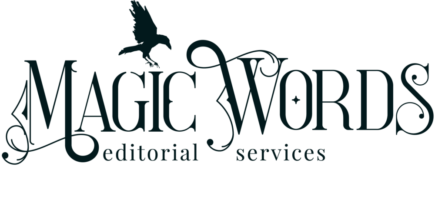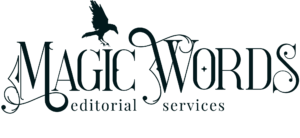
Budgeting for Editing: What Goes Into the Cost of Editing A Book
Magic writer, how much do you know about the factors that influence the cost of editing a book? A whole lot? Nothing at all? It’s important that you understand the realities behind that heart-stopping price quote before you sign with an editor.
I get it, I really do. “Money” is the new four-letter (er, five-letter?) word these days. It’s expensive to be a writer, especially one who wants to self-publish for the significant benefits it offers over going the traditional route. Dollars for this, dollars for that—and all on top of the growing cost of basic living. As a freelancer who chose freedom, flexibility, and the chance to direct my own course in life over the comfort and (false) security of a regular paycheck, that struggle is real. I’m also an author who hopes to one day publish her book, and then several more after that, and I’m already eyeing the coming expenditures with mounting dread.
Early in my own writing journey, I received some fabulous advice, which was this: indie authors must start treating the production of their creative work like a business. Yes, you’ve put your soul onto the page. The you that makes you, well, you lives in those lines. But, once you package those words, pretty them up, and slap a price tag on them, you, my friend, have gone into business for yourself. You’re no longer an amateur, you’re a professional. A business owner.
What does a business owner do before she even opens the doors? She invests in her product. And, if she wants to position herself as a purveyor of quality goods, she invests more than the person who slapped together something out of the cheapest components possible.
A Mercedes is a Mercedes because it doesn’t run on Kia parts.
People—readers—know quality when they see it, whether we’re talking about cars or books. Editing (and cover design, the “billboard” of your book) is not where you want to skimp on quality. So, the best thing you can do up front is establish a budget for editing. This post will help you do that by giving you tips on what goes into a cost estimate for an editing project, how most editors charge, how you’ll be expected to pay for services, and ways you can make your budget stretch.
What Goes Into the Cost of Editing A Book
When you’re trying to figure out how much you’ll need to budget for editing, it’s good to know beforehand what those dollars will get you. Yes, hopefully, you’ll receive a polished, mostly error-free manuscript (no editor can make a m/s perfect). But don’t look at the sum you’re about to pony up in terms of simply the cost of a clean manuscript.
What you are buying, actually, is a skilled professional’s
- years of training and the knowledge and expertise it gave them
- precious time spent striving to help your book be the best it can be, instead of spent on their family, their hobbies, their life
- background and a lifetime of lived experience, which could possibly help your story (all that useless trivia has to come in handy sometime!)
- wisdom and guidance about what is and isn’t acceptable for a quality book
What kind of price could you really put on such intangible benefits and qualifications?
Yet editors try to fit all of that into a fee that keeps them fed and sheltered and their student loans paid, but isn’t too shocking for their clients to handle.
Beyond trying to earn a living wage, there are several other factors that make up the cost of editing a book. Here are the most common variables that you as the author bring to the pricing table:
Length
The longer the book, the more words that need to be edited, the more time it will take an editor to find the mistakes and make their suggested corrections. Length and word count is not the only variable that makes a book more or less expensive to edit, but it’s a big one. That 280,000-word science fiction saga is going to naturally take many more hours to edit.
Complexity
An editor is a close-reading specialist. They pay attention to every little detail, not only in your writing but also in your book itself. If there’s a huge amount of POV switching, many characters, multiple settings, or a lot of other details that make up your saga, an editor will have to keep track of all of that to do a competent edit.
Cleanliness
Your grasp of grammar, spelling, mechanics, and usage will play a role in the total cost. A manuscript that is less error-free will take more time, which will be a factor in the price.
Four Ways Editors Charge
The way editors structure their fees varies widely. And some editors start out charging one way and then switch things up as they gain more experience or more clients to fill their schedule. Each method has its pros and cons.
Here are the most common editing fee structures:
By the word
The editor charges a set per-word cost to arrive at a total price based on how many words are in your manuscript.
Pros: This is an efficient way to account for the length of time an edit might take based on the length of the book alone.
Cons: Charging strictly per word doesn’t factor in the complexity or cleanliness of a manuscript. And authors who write really long books (fantasy and sci-fi writers, I’m looking at you) typically have to pony up more.
By the page
The editor sets a round cost either per page or per number of pages. (Example: A line edit costing $100 per 50 pages, or $2 per individual page.)
Pros: This is a simple way to price and can help authors develop a fairly accurate budge as they shop around for editing.
Cons: There are too many variables that go into the definition of a “page.” The typical word count of a book page is 250 words, but what if the author has single-spaced the entire m/s with 1/4″ margins? That 100-page Word manuscript, which only costs $200 when priced by the page, isn’t a good deal for the editor and they lose their shirt on the job.
By the hour
The editor charges a certain amount per hour to edit the book.
Pros: Honestly, there aren’t many pros to this method for either author or editor.
Cons: Many. An editor would have to know exactly how long it would take to edit the book. Any unforeseen issues will add time the the edit. A faster editor might charge more to make up for less hours charged. This can end up being the least efficient way to price editing, which is why it’s the least common for fiction.
By the project
The editor charges a flat fee for the editing project.
Pros: This offers editors a lot of flexibility to set the cost of the entire project based on all of the factors: length, complexity, cleanliness. Project pricing also gives authors a firm, set cost up front.
Cons: There’s no way for an author to easily estimate cost while shopping around. The quote is based on the editor’s judgment after seeing the full manuscript and performing a sample edit.
As mentioned, pricing methods vary widely. I can’t presume to say for certain what most editors do, but for myself, I start with a per-word cost based on the length of the manuscript, then present an estimate to my authors that is project based. The estimate takes into account the additional factors beyond length (complexity and cleanliness), which I evaluate during a trial edit.
The Editorial Freelancers Association attempts to corral typical editing rates to help authors get a general idea of the amount to budget for their particular book. You can find that rates table here. Note that their rates are broken down by word and by hour only.
How You’ll Be Asked to Pay for Editing Your Book
Most editors will ask you for some kind of deposit when you schedule your project (or they should) with the remainder due when the manuscript is completed. Some editors will offer payment plans that allow you to stretch your investment over a period of time; some are dead set against this practice. Some editors take credit cards, some only allow Paypal or Zelle or check.
The point here: ASK. Ask the potential editor about their payment policies ahead of time. And, if those policies aren’t a great fit for your situation, that might be a sign the editor isn’t right for your project.
Let’s talk sample edits. If an editor offers a sample edit, sometimes they might charge a nominal fee for the time it takes them to complete it. Not all do! But, again, ask if this is the case. And, perhaps set aside some of your budget to cover these expenses.
How to Budget for Editing
When you’re thinking about how much to budget for editing, or really any aspect of publishing your book, don’t make the mistake of using what money you do have as a starting point. If you start shopping around for an editor for your book (not to mention a cover designer, a formatter, marketing funds, etc.) and your savings account only has $250 (or less), you might need a reality check. Yes, you want to publish IMMEDIATELY so you can begin raking in those sweet, sweet sales. But, remember, to make the sales you want (and need) you have to produce a quality product. Chicken, meet egg.
“But there has to be a way I can get editing on the cheap,” you say. “Maybe I can talk an editor into doing it for less! I’m a great negotiator.”
Er. No. As Sandra Wendel says in her great book Cover to Cover: What First-Time Authors Need to Know About Editing, “Working with an editor is not like buying a used car.” Most won’t negotiate, and those that do are probably new, desperate for work, or don’t value their skills and training (perhaps for good reason).
Instead, it’s better to plan ahead for these expenditures, even when you’re still in the drafting and revising stages, and start shopping for estimates to develop an idea of how much each publishing professional will cost. For editing, use the EFA’s rates chart and calculate an estimate based on the number of words you think you’ll have when the draft is complete. If that number doesn’t match your current scratch, adjust your publishing timeline and start saving until your balance is closer to your goal. Remember, once your book is done it becomes a product, and you become a business person with a product to sell. Your work is your brand: Do you want your brand to stand for quality, or do you want to be a cheap knock-off? Budget accordingly.
“But!” you cry, “I’m poor! I don’t have any money for editing, or cover design, or formatting, or . . . anything! How am I supposed to pay thousands for all that stuff?”
If you truly have no means to save any extra, if you’re living paycheck-to-paycheck (HOOO BOY, have I been there, many times), then there is absolutely nothing wrong with going the traditional publishing route. Perfect your book as well as you can on your own and/or with the help of free beta readers and writing group critiques, submit your heart out to agents or small presses, and plan to be patient and resilient while you work through that process. It might take years, it might never happen, but it may be the lowest-cost publishing journey available. (I say “may be” for a good reason. Even traditional publishing house are starting to adopt a pseudo-hybrid model where they ask authors to shoulder some of the publishing costs, especially for marketing.)
Remember, though, with the traditional publishing route, everyone who touches your book—the agent, the publisher, etc.—takes a cut out of your profits. Royalties, when they arrive, are much less than what self-publishing authors enjoy as a result. It sucks, but until there is a revolutionary shake up in the publishing industry that makes bringing a book to market easy, cheap, and lucrative, for everyone involved, this is what us writers have to work with.
Okay, enough with the depressing tough love! I know money is a tough subject which no one likes to talk about, but I hope by tearing off this Band-Aid, I’ve helped you feel a bit more prepared to manage editing costs when the time comes for you to hire an editor.
And if you’re at that point, I invite you to complete your application for editing services. I’ll give you a complete, firm cost estimate right off the bat so you’ll know how much you’ll be asked to invest in your book. Learn more here and apply here.
Other posts in this series:
What Does an Editor Do, Exactly? The Real Job of an Editor
The Different Levels Of Editing And How To Decide What Your Book Needs
Thinking of Hiring an Editor? Four Ways to Find “The One”
Thinking of Hiring an Editor? Three Places to Find “The One”




